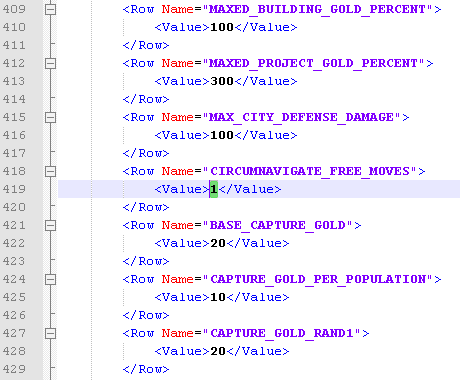
Stargazy Studios is an
independent micro developer in the truest sense. I am the sole
designer, programmer and business lead, with art and audio assets for
my projects created by
talented
contractors. This structure was
necessitated by my means and contacts when I started making games in
2009. However, after having operated in solitude, I would elect to
work with colleagues in the future wherever possible.
The differences between
working alone and working in a team extend beyond creative control,
and are not obvious without having experienced both. There are
notable
solo
developers
who have made
significant
works,
but their individual processes are rarely dissected. I suspect they
will have encountered some of the negative effects of solo work that
I have, and their knowledge would have been useful when I started
out.
Any entrepreneur should
weigh the implications of team size in their business model, so I
will summarise my observations here for consideration.
To frame the following
advice I offer context, by describing the specific work that I do.
Game development is a broad spectrum of endeavour, which is defined
primarily by the scope of the target product, and the tool chain used
to create it. In my case, the majority of my time is best classified
as research and development. This is because I was
unable
to find off-the-shelf tools to craft the game that I wanted to
make, and have had to write my own engine to build it. This has been
an enormous effort, and not one that I had originally envisaged
undertaking.
I strategically chose
industry standard technologies, such as the
C
programming language and
XML data encoding, expressly to leverage shared code. What
surprised me more than the dearth of code sharing in the game
development sector, was that more general libraries, which I would
consider broadly rudimentary, were missing from the public domain. I
wanted innovative features, unseen in games before, so had expected
to have to write some proprietary code. However, the only shared
libraries that I have been able to reuse are
OpenGL
and
LibXML, which comprise only a fraction of the functionality of a video game. Data structures, an
asset management pipeline, dynamic storage of assets at runtime,
rendering and pathfinding are all scratch-built features of my
engine, which I am sure have all been written many times over behind
closed doors.
What typifies an
environment in which research and development takes place is the
feedback bubble that encompasses it. The bubble contains only those
who are working on a project, so all motivation must be drawn from
introspective evaluation. This is why deciding a team's structure is
so important. Until your process yields a product that can be
evaluated and patronised by consumers, your feedback from external
parties is nil. All energy expended between start to release is
imperceptible to most people, either because the undertaking is
unknown to the target audience, or because those who are observing
the process do not have the domain-specific knowledge to parse it.
A practical example of
this type of working environment is the academic research involved in
attaining a PhD. Research areas tend to be highly specialised,
perceptible only to those working in the same field, and individual
candidates must conduct self-directed study for several years before
submitting their theses.
In the case of a PhD,
candidates have the support of their departmental peers, as well as
their experienced supervising professor. This mentor-lead structure
has evolved over hundreds of years in our academic institutions,
refined to yield successful research. So, if adding members to a
research team boosts individuals' motivation and success, then why
work solo?
Complete creative
control over a personal project may seem attractive, but I have found
it to be outweighed by the effects of being the sole occupant of a feedback
bubble. Feeding off of your own energy and enthusiasm for long
periods of time is exhausting, and when you run dry, burn out sets
in. Productivity suffers until you have rested enough to rebuild your
motivational reserves, costing you an entrepreneur's most valuable commodity:
time
to market. In a team, individuals' troughs can be offset by other
members' asynchronous energy levels, as the desire to perform in line
with ones peers takes effect.
Also, unlike PhD
research, making a game is a multi-discipline endeavour that lends
itself to parallelisation. A team may attempt to make a game with a
larger scope than a solo developer, even with the efficiency drag of
communication and coordination. As the market only subjectively evaluates the final product, there is no regard
paid to the resources spent to create it. The majority of consumers
will not be aware of, or be concerned by, the size of the team that
made a product. Limiting the scope of your output can make you less
competitive in this marketplace, which is another argument for
teamwork.
So, again: why work
solo? In my case, and for a lot of other independent developers, it
is not a choice. It is a matter of risk adoption. Unless you have
access to risk-hungry entrepreneurs, willing to work for equity in
your product, then you will need resources beyond most people's
personal wealth to incentivise employees. If you have the skill set
to make games in a small team, then you are highly employable in a
range of well compensated technology roles. Game development, and
other private sector entrepreneurship, suffers from not having the
established support structures and
ring-fenced
funding of our academic institutions.
I graduated from
college in computing with friends, and had worked in technology until
I formed Stargazy Studios. I had many in my professional network with
the ability to make games, but the issue was that they were of an age
that they had begun to take on liabilities, making them risk averse.
Salary-backed mortgages, and dependent family mouths are standard
societal concessions made in your late twenties and early thirties.
As I had no experience with game development, I considered it
disingenuous to promise a suitable return to those who did not make
natural entrepreneurs. Although new
funding
avenues have
become available
with which to pay regular compensation, these require a
minimum
viable product for application, and do not underwrite the crucial research and development phase of creating a game.
Start something early in your life, as soon as your professional circle includes those with applicable skill sets. Stay involved with organisations that naturally attract entrepreneurs: academic institutions, local interest
groups, and
co-work and
hack spaces. Bootstrapping with
fellow entrepreneurs, unburdened by personal liabilities, minimises start up costs, and the risks of failure.
Another way of reducing
entrepreneurial risk is to have a successful track record. If you are
an alumni of the traditional game development industry, then you are
more likely to be able to form an independent team. Unlike the
vocational skills attained through many higher learning courses, the
only effective way to train to make games is by making games. In
addition to being able to attract first round funding earlier, by
being a better investment, your peers form a pool of experienced
professionals who can be productive from day one of a project.
Resultingly, the scope and success of games built independently by
alumni teams
is
enviable.
Those who are young,
risk-hungry and highly trained, combined with the veterans of a
small,
often
employee-hostile
industry, represent a sliver of those with something valid to
contribute to games. However, for the remaining majority, we are unlikely to have resources to build a team.
So, without access to colleagues to bolster
productivity and morale, what factors improve an individual
entrepreneur's chances of success? They are the same as for those who
work in a team, but are more acutely felt without augmentation. After
several years of solo work and introspection, I identify the
following key sources of sustenance during a project:
Ego
Every
day you will be challenged to achieve technical feats, be creative,
consume vast quantities of applicable material, meticulously execute
clerical tasks, and solve problems made for you by others. This must
be done day in, day out with the exclusion of any external feedback.
No-one will recognise your utility until you have a product for them
to consume. Going into a project like this, you must carry enormous
personal reserves of energy, and an unyielding resolve to finish. You
must believe in yourself absolutely, with no allowance for second
guessing the value of what you are trying to achieve. There will be
ancillary drains on your time and effort that will attempt to
distract you from your goal. You must be single-minded and selfish,
immediately cutting down the tendrils of procrastination or
distraction as they sprout. Ultimately, you must do anything necessary to succeed.
A
Community of Peers
No-one
will truly understand the exertions of the process you are going
through without being there to experience it with you. However, if
the product you are creating is worth your time and effort to create,
then it is likely there are others who are attempting a similar
enterprise. Seek them out, and give each other support by offering
understanding and aid in your shared challenges. When possible,
demonstrate what you have created to your peers for valuable
feedback, during what would otherwise be a drought. Solidarity and
positive criticism are powerful forces for replenishing energy levels
and improving productivity.
Unconditional
Love
Friends
and, especially, family will want you to succeed. Their emotional
investment can be a source of motivation for you to finish your
project. As well as any inherent trust that they have in your
abilities, it is also important to explain your motivations to them.
Without necessarily understanding the process required for its
creation, they should be able to see the value in your envisioned
product. However, be wary of time pressure exerted by those around
you who do not understand the work involved. Continually being asked,
“When will it be done?” is not a positive motivator. It devalues
your exertions, encapsulating the groundless assertion that you are
working too slowly. This is often unintentional, but as time spent on
a project is the only perceptible metric to most people, expect it to
dominate conversation.
Some
days, you will undoubtedly feel beaten up by the seeming
insurmountability of your task. Putting the project out of your mind
and seeing friends and family can be an effective antidote to this.
Remind yourself that it is possible to be happy without having to
cross off another item on your to-do list. Also, observing that the wider
world won't stop spinning on the basis of your success shrinks your problems. You can then carry the positivity you gain from being
valued externally of your work back into your process.
Good advice always
seems like common sense when read. Though, practically implementing
it is non-trivial, as I found when I relocated Stargazy Studios.
Development was going
well, and I had the experience of working solo from a home office for
some time. I thought it would be trivial to move to another metropolitan area and continue my operations. However, I did not have the above factors in mind when I committed to a
move.
The pool of
entrepreneurial risk-takers in a society is small, and is even
further diminished when considering a single, niche industry. There
are two hubs where you can find a significant community of
independent game developers in the United Kingdom:
London
and
Cambridge. In
relocating, I moved away from one of these to a city without
an indie scene. The lack of peer solidarity, shared interest and
positive feedback was further compounded by being distant from
friends and family. Weekly meetings with my support network, familiar
with my work, and invested in seeing its completion, became quarterly
or annual.
In isolation, my energy
levels were quickly diminished. This left me vulnerable when
antisocial neighbours moved in next door to us, shortly after we had
arrived. They destroyed my home working environment with their
constant noise, which ate away at my productivity. Eventually I was
so burnt out that I took a sabbatical to start another business. My
confidence was completely undermined at the time, and I was unsure as
to whether my inability to continue with development was a personal
failing. I looked at the new business as being a potential transition
if this was the case.
However, away from the
tainted home office, I was able to recuperate and refocus, finding my
energy return with a fresh entrepreneurial challenge. In this clean
air, I realised that game development was the path that I wanted to
take, and resolved to finish what I had started. Identifying our
neighbours as the root problem, I moved into a quiet
co-work
space to resume Stargazy Studios' development. In the new
environment I found my programming productivity return, which was a
tremendous relief. The workspace provided a stopgap whilst moving
house, where I re-established a professional home office, and was
able to continue with my business unfettered.
The time lost to this
distraction is lamentable, and was also avoidable. I should have
identified our neighbours' disruption as unacceptable upon their
arrival. Insisting on moving home immediately upon relocating to a
new city seemed costly and selfish at the time, but now I see it
would have been the right course of action.
I must continue to be vigilant, and find ways to bolster my energy levels so that I can take action when it is required.
Although the distance
from my peers, friends and family is currently immutable, I am
finding ways to improve my process to compensate. This is why I have
decided to resume writing articles: to increase others' understanding
of what I am doing, and to find solidarity with those who have had
similar experiences. I am also
open-sourcing
the code that I've developed to plug the void in the public domain.
This offers the dual benefit of allowing peers to avoid unnecessarily
replicating my work, and for them to gain a deep knowledge of the
challenges that I have overcome.
Without a fundamental
change in the way that independent game development is supported, I
feel that my struggles are due to be replicated ad infinitum. There
are examples in other research-lead sectors of creating resilient
environments to foster nascent entrepreneurial enterprise. In the
private sector these take the form of
incubators,
and are
prominent in the
contemporary Silicon
Valley startup model. Incubators offer startups operational
resources, the experience and contacts of successful grey-hairs, and
subsistence funding. Given that video game development is ideas
driven, it is surprising that the asset-rich, pre-digital
distribution era publishers have not invested heavily in
portfolio-broadening think tanks such as these. It seems like the
natural role of a publisher after the democratisation of game
development.
At the time of writing,
the incubator framework has started to
emerge
naturally
in the independent developer community. Game development cooperatives
are forming around
prosperous
indie studios who are willing to seed startups with their
knowledge and financial success. I have always thought that this would be the future of the industry, as is solves many of the problems that
I have highlighted with solo entrepreneurship. Mentoring, and a
community of peers are baked in, resource sharing can take place
quickly and organically, and cooperative members can work on
multiple projects, avoiding burn-out and becoming invested in a wider
product range.
It is my intention to eventually build
such an environment. Great game ideas should be born, regardless of
their creators' ability to conquer avoidable operational hurdles.








 Blog
Blog Twitter
Twitter GitHub
GitHub Steam Curator
Steam Curator Blog Feed
Blog Feed Contact
Contact